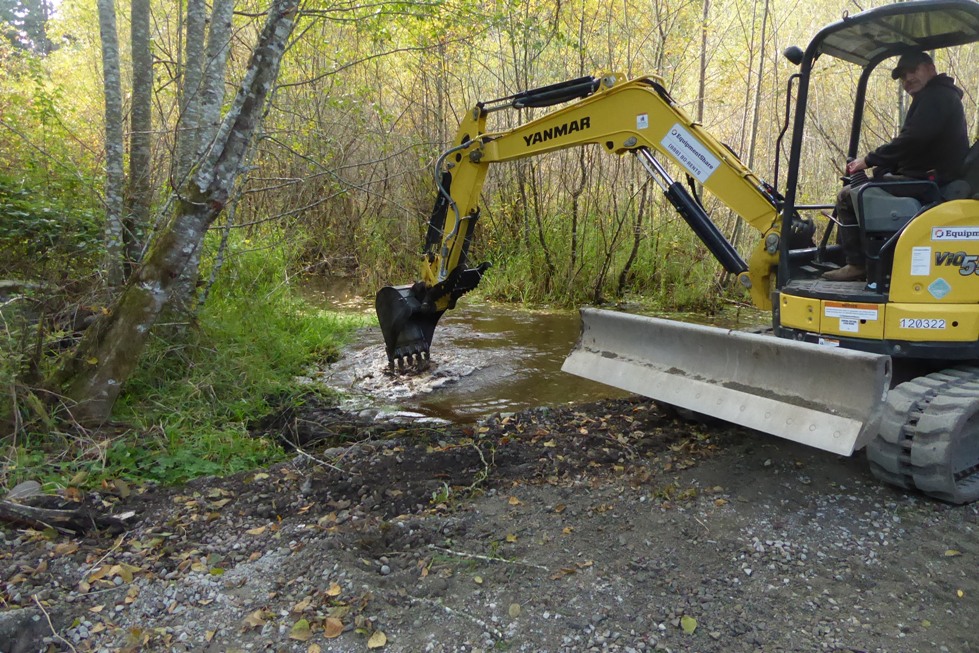Review of Thurston County Court permit for the Tiny Home Village?
On March 28, the Thurston County Superior Court convened on Zoom with over 60 people attending. Others in the courtroom were not visible on camera. Prior to the meeting, the judge had read the legal briefs about the appeal of the Conditional Use Permit that would allow the construction of over 280 cottages in a Tiny Home Village on 30 acres.
The proposed village was surrounded by 50 acres of wildlife habitat, forests and wetlands that were designated as Biodiversity Management Area, in a Rural Reserve Zone Designation granted by the Pierce County Council.
After the issuing of an Executive’s Priority by the former County Executive, the planning staff and Hearing Examiner sat back and allowed the removal of 900 trees, the destruction of wetlands, and significant changes in the chemistry of the wetlands at the headwaters of Spanaway Lake. This resulted in the largest fish kill in Spanaway Lake in 75 years.
The use of the Executive Priority and in the subsequent public hearings showed neighbors how weak the county’s environmental laws are and how rarely they are enforced by the planning department. Three times over, Pierce County Hearing Examiners claimed they did not have the authority to ensure compliance of Pierce County Code and did not even have authority to enforce the Federal law that protected the Bald Eagle’s nest on site.
The Examiner also allowed the county planning department unlimited time for the developer to comply with county code, implying that he could not issue a fine for the code violation, nor would he revoke the Fill & Grade Permit, no matter how many trees were cut or whether the wildlife disappeared from the site.
Our request for an Environmental Impact Statement was denied early on in the process when the county staff issued a Designation of Non-Significance. After the protest before the Spanaway Parkland Land Use Advisory Commission, there is no chance of requiring an EIS. The document would have shown that the wetlands and creeks were part of this Biodiversity Management Area and recognized by the WDFW as an Ecologically Significant and part of the state’s Priority Habitat and Species Program.
At the March 2025 hearing in Thurston County, none of the wildlife designations were included in the attorney’s briefs for the Spanaway Concerned Citizens’ case. Instead, they focused on whether the original application was vested, whether it is inconsistent with the county’s Comprehensive Plan, and if the original application was completed by the developer.
Nowhere in the briefs was there any mention that the builder cut down the forest in a way that destroyed habitat and that occurred after the WDFW had given the builder a Violation Notice.
In the notice were clear directions not to apply for a county Fill & Grade Permit. And, nowhere in the brief or in court was there a discussion about a major fish kill on Spanaway Lake which resulted from iron in soils that were disturbed after the builder changed drainpipes and altered the flow of the creeks that ran into Spanaway Lake.
Without these crucial environmental issues raised in the briefs, the judge was limited in the issues she could comment on. And, although there was a similar zoning case in an appeal of a completed application for a conditional use permit in Graham, it did not apply to this appeal or provide a way to win the vesting argument.
What was hopeful with the Superior Court judge was that she had the legal authority to revoke the Conditional Use Permit. However, the request that she rule on any of the environmental issues which had been presented in several previous appeals was missing entirely.
The vesting argument was technical and focused on a dispute regarding the old drainage district easement affecting the title to the property. It looked like the blame was with the title company, so the judge agreed that TRM held a valid title.
Another issue concerned the number of dwelling units allowed in the Residential Resource Zone and how they might encroach on the sensitive wetland area buffers.
This involved interpretation of Pierce County Code but did not mention wildlife habitat in the wetland. The county’s attorney defended the decision of the Hearing Examiner and the judge, who was not provided with the opportunity to rule on any of the environmental issues. She had no choice but to uphold the decision of the county’s Hearing Examiner.
What can be learned in this series of hearings is that the Pierce County Code is not strong enough to provide consequences for violating wetland buffers or even to collect a $9,000 fine after disobeying a Violation Notice.
It comes back to the beginning. Once the Pierce County staff makes a Determination of Non-Significance, there is no hope of getting wildlife habitat studied or of enforcing requirements to mitigate for narrowed buffers, or of stopping the destruction of wildlife habitat that has been designated in both state and county code.
Judge Murphy asked many questions of each presenter. After a break at 4:22 in the afternoon, she returned and announced that the petitioner had not met the burden of proof and that there was not an erroneous ruling by the Hearing Examiner.
The appeal was denied.
What possible action remains for Spanaway Concerned Citizens to continue their effort to stop the village? They have 30 days to decide on their next move. First, they have to get over the feeling of loss. It’s been a long and rough road bouncing around trying to find an examiner or a judge who had the authority to enforce county regulations.
The amazing thing to watch was how many people were willing to stand up and protest the loss of trees and wildlife habitat. It was also amazing to see how generous people have been in funding this endeavor. If nothing else, the experience has identified where the county code needs to be strengthened and where it needs to be enforced.
We’re not done.


